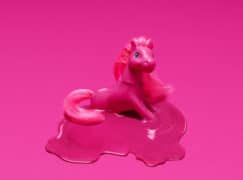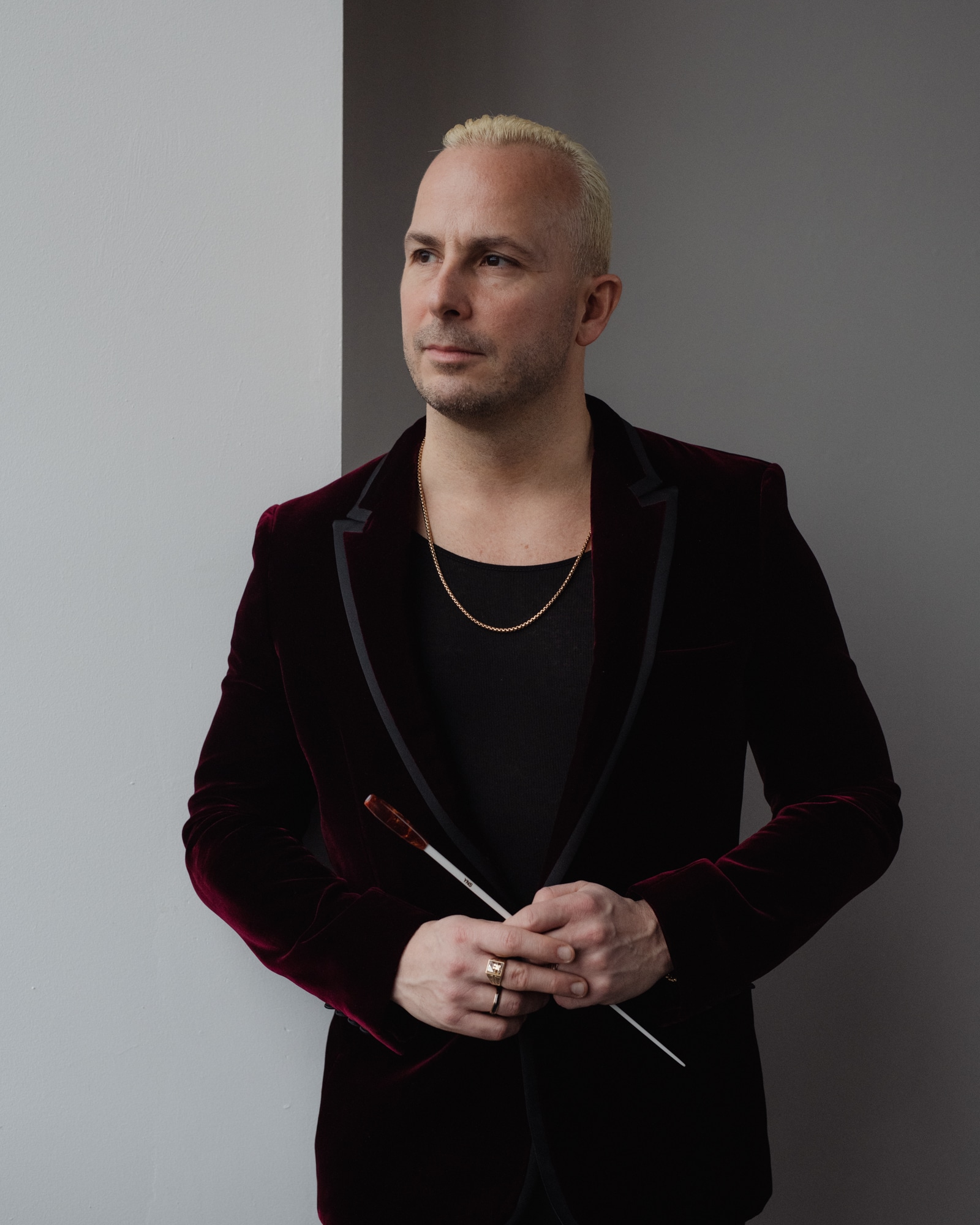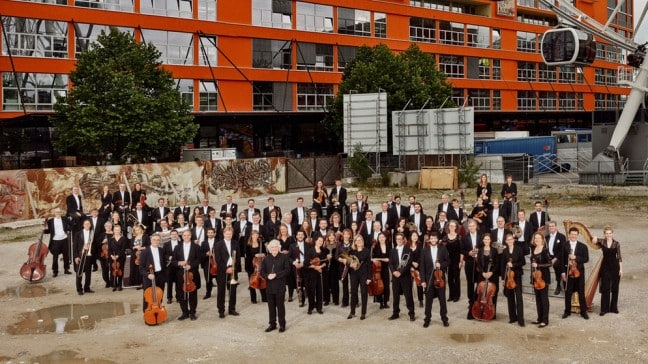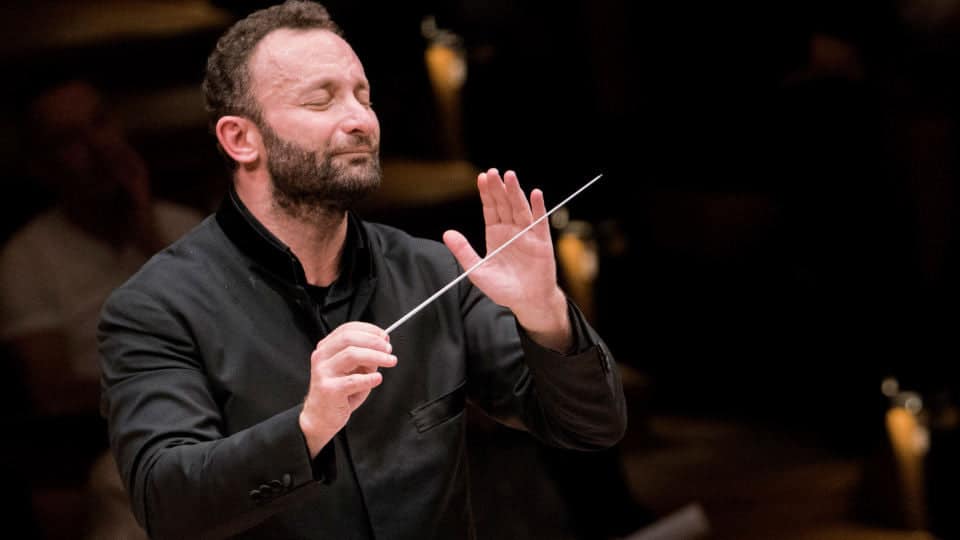Will this toy take you to Salome?
mainEnglish National Opera is marketing the Richard Strauss shocker with this animal Barbie image.

The images for other productions are no better. See for yourselves.

English National Opera is marketing the Richard Strauss shocker with this animal Barbie image.

The images for other productions are no better. See for yourselves.
The tenor Ian Bostridge shocked Symphony Hall Birmingham…

He is already music director of the Metropolitan…

The conductor continues his agitation for a new…

The Berlin Philharmonic chief conductor Kirill Petrenko has…

Session expired
Please log in again. The login page will open in a new tab. After logging in you can close it and return to this page.
every time it’s hard to judge a book by its cover, any way the main thing is the content.
Apart from the orchestra the content of opera is singers – mainly soprani, men are also counted 😉 So, logically, we can rather speak of voice quality at ENO ( and many here have spoken on the subject before). Everything else is a pure marketing, I , personally, didn’t appreciate those pictures -teasers ( concur with Norman).All the same the images are stylish and closer to millennials’ set of mind rather than conservative ones. The questions looms – who are ENO’s target audience and how good are ENO’s singers compared to ones at any of top-notch opera houses ? If they are millennials and Lucia can hit all top notes easily and (important for the audience 😉 ) keep cadenza as long as at least half a minute – their marketing be with them for their success 😉
disclaimer 😉 – just my opinion, of course
question looms …
All these PR gags from modern trained marketing staff – so funny – but at the same time sad. Reminds of the stupid yellow ‘Quietsche Duck’ of Oper Leipzig who is in the social media since weeks, hiding as well at public spots in town. If one does find you will get a ticket. Better get attention by high standard singing, music and of course inspiring productions. This thing even gets headlines.
https://www.mdr.de/sachsen/leipzig/leipzig-leipzig-land/werbe-ente-geklaut-stadtreinigung-leipzig-100.html
This looks like a model of Pinkie Pie, a Hasbro product. (I have grandkids; that’s why I know this crap). What in the world this has to do with Salome eludes me completely. “Pinkie Pie brings cheer and playfulness to brighten her friends’ days! Like any good pony in Equestria, she loves eating sweets and throwing parties for all her friends. ” Some party at the end…
The word Salome should be enough to entice an audience, except when it’s in english (or directed by Freyer, Guth, Neuenfels etc.)
The picture used for Salome more likely makes the point that Salome was little more than a child when she danced for Herod.
More information here:
https://margmowczko.com/salome-was-the-dancing-daughter-of-herodias-a-child/
Lot of musos giving their opinion on marketing material here, I see. Any PRs, press officers or print designers want to come on and tell us how to sing or play the violin?
Or perhaps we should let trained professionals do their jobs, and if we’re incapable of understanding their work, refrain from comment, lest we end up looking literal-minded and ignorant. That work for everyone? OK. Great.
ich lach mich tot!
Are you equating searching the net for loosely associative pictures with playing or singing Strauss?!
But that’s the point. The suggestion is that the marketing people may have got it wrong. As an opera fan who lives in London, I am the sort of person whose opinion ought to count. Personally, I’d say that it’s a bit hit and miss.
Britten’s War Requiem represented by a broken tree branch: doesn’t really encourage me to see the show, nor does it have any obvious connection with the work (I can see that it’s a metaphor).
Lucia di Lammermoor: not sure what a woman’s face surrounded by black-gloved hands has to do with it, apart from that it’s a vaguely sinister image of a woman succumbing to something.
La bohème: a candle that’s just been extinguished is quite clever, as it clearly refers to the plot (drawing attention to a moment early in the story that is easily overshadowed by the opera’s tragic conclusion), while also being an intriguing image that has multiple meanings.
Akhnaten: just makes me think of Apocalypse Now.
I love the Noye’s Fludde photo. Two zebras crossing a zebra crossing is an arresting image, unexpected, funny, but also clearly relates to the opera.
The Jack the Ripper photo actually makes me want to go to the opera. It’s evocative, unsettling (asymmetrical, we don’t see the women’s faces), and ambiguous (is this about women who are about to be victims of the Ripper, or is it something more interesting than that, solidarity in the face of terror?)
Does this say Dido and Aeneas to you? https://d2ae1n566nbglo.cloudfront.net/wp-content/uploads/2018/04/26141655/dido-800×600.jpg I guess it tells us something about the liberties the production is taking with the libretto. Belinda is now apparently Dido’s daughter, not her sister. We don’t really know very much about ethnicity in the ancient world, but Dido appears to be southern European or Levantine, which I guess would make sense if Dido was originally Tyrian. Belinda, now her daughter, appears to be partly black. Is her father supposed to be a native north African? Were north Africans in antiquity black? We don’t really know. It’s very subtle, but Italian flags can be seen in the distance. Was this carefully arranged, or was it just by chance? I don’t recognise the buildings, but maybe the photo was staged in Clerkenwell, home to a long-established Italian community. It does suggest that a lot of care may have gone into the photography. On the other hand, I don’t know that it makes me want to see the opera.
Overall, however, the question is presumably whether these photos will attract people who don’t already go to the opera. To some extent, the photos are irrelevant to me, as I’ll go to the opera anyway because I know the music. The purpose of marketing is going to be in large part to attract people who weren’t already going to go. And maybe for some people the snake photo makes them want to see The Magic Flute for the first time.
C Porumbescu: “Or perhaps we should let trained professionals do their jobs, and if we’re incapable of understanding their work, refrain from comment, lest we end up looking literal-minded and ignorant. That work for everyone? OK. Great.”
Yep.
Alex Davies: “To some extent, the photos are irrelevant to me, as I’ll go to the opera anyway because I know the music.”
Sometimes it’d be better to use these pictures than from the actual stage. I remember being in Tosca and there were people with pig masks (on the stage, not in the audience. That would’ve been even more disturbing.) I’m pretty sure I’d skipped this performance if only I had known. But then again, one could argue that someone was doing his job as a trained professional. I think the only thing we can do is: We can like it – or not. But, as Porumbescu pointed out, we shouldn’t question the quality of those people’s work without being qualified.
That being said: I don’t care for the picture. Would it encourage me to go? No. Would it discourage me to go? No. So, no harm done here.
Hmm, I feel that if I were to see a production of Tosca with people wearing pig masks I would probably begin to suspect that there was something wrong with the production. No, I’m not a professional opera director, but I’ve been to enough operas to know what works and what doesn’t. Or, at any rate, what I like and what I don’t like. Yes, I imagine that photos of the actual production would be more useful, although I wonder whether one issue is that if there are new productions there may not actually have been an opportunity for photos at the time the marketing photos go to press.
A child’s toy melting away.
Looks like an appropriate metaphor in this case.
It served its purpose well for me, I had to look a couple of times and think about it. Hey wait, isn’t that what art is meant to do?
(otoh, the associated paragraph appears to be pure marketese)
I have nothing to say (hurrah!) about this, other than that the ENO’s tradition of singing everything in English annoys the bejezus out of me. The Reginald Goodall Ring (admirable in every other respect) was ruined for me. Imagine: Siegmund to Sieglinde, who has poured him a shot of mead. Wagner: “Schmecktest du mir es zu?” Perfect in metre and Stabreim. ENO: “Will not you taste it first?” I ask you. Read the bloody surtitles, for Chrissake! Salome (in spite of Oscar Wilde) can’t possibly come across with the same force in English as it does in German. Peter Grimes, for that matter, wouldn’t sound right in Italian, would it? As for Salome, has anybody seen/heard the 2018 Salzburg Festival production with Asmik Grigorian in the title role? I was gobsmacked!
Are we still talking about this? It’s ENO’s reason for being. It’s like criticising the Royal Ballet for dancing too much. If you don’t like opera in English go elsewhere!
Yes, but it was ENO’s reason for being before surtitles existed and before people had smartphones and tablets to read up on the story during each interval (although I am old enough to remember when Kobbé was indispensable). Now that there are surtitles and everyone carries the internet in their pockets I don’t see the need for opera in English. Take O soave fanciulla, for example. Every time I phone the ENO box office I have to listen to somebody singing, ‘You vision of beauty’. It doesn’t mean remotely the same thing as the original, and it also doesn’t sound nearly as beautiful. The only opera that sounds really good in English, to me, is opera that was written in English. Likewise, I wouldn’t want to listen to Billy Budd in Italian, Peter Grimes in German, or Dido and Aeneas in French.
+1
I think that some opera works well translated into English (comedies, operettas, pieces with large portions of dialogue, family shows), but I think it’s worth presenting opera in the original language given that surtitles are standard, and I think that some opera ought to be left in the original language. I listened to some of the Opera in English CDs on Spotify, and while I enjoyed some (The Magic Flute, Hansel and Gretel), some of them just sounded bizarre. This is particularly true of the Italian verismo operas – histrionic Italian passion seemed to get translated into corny, histrionic dialogue sung by people who want to sound like the royal family.
If I were in charge of ENO’s policy, I would follow the model of Opera North and WNO and present some works in translation (particularly comedies), but also some in the original language.
The image is likely not designed to reach opera regulars. They will make their attendance decisions based on repertoire, conductor, cast and director. Whether they like or don’t like the image used won’t make much difference to them.
Where it DOES make a difference is with the more casual attender. This attender is likely to be younger, less informed about the repertoire etc and be more of a cultural grazer. An arresting image can help cut through and reach this kind of person in a very very dense cultural market place like London.
Personally, I love the image.
The marketing images look as if the ENO staff is laughing heartily about their own productions and don’t take them very seriously. I would think it is quite off-putting.
What’s with horses and Salome? This summer in Salzburg – the black stallion in Jochanaan’s pit, then its severed head placed on Jochanaan’s headless naked body, now this pink Barbie horse …